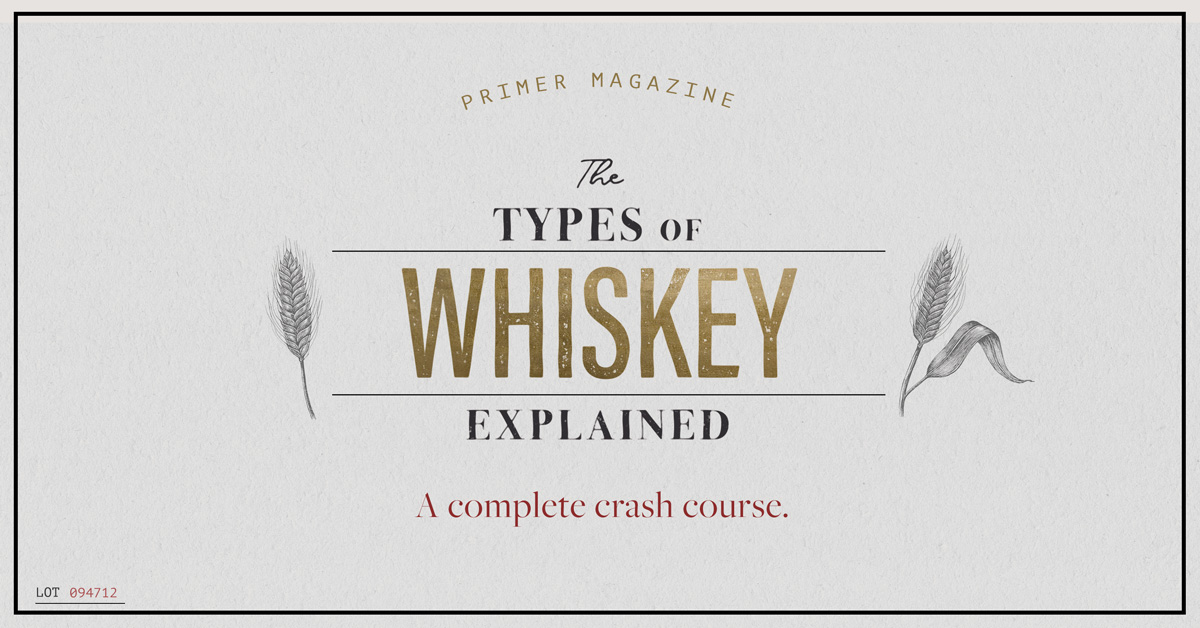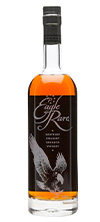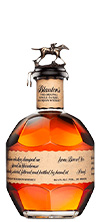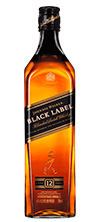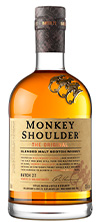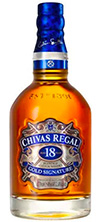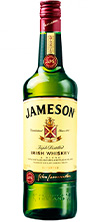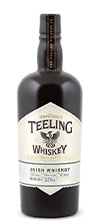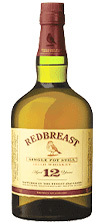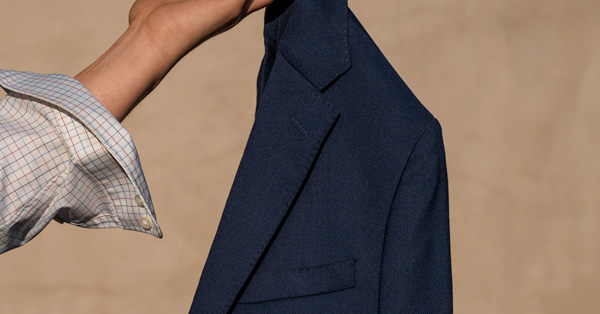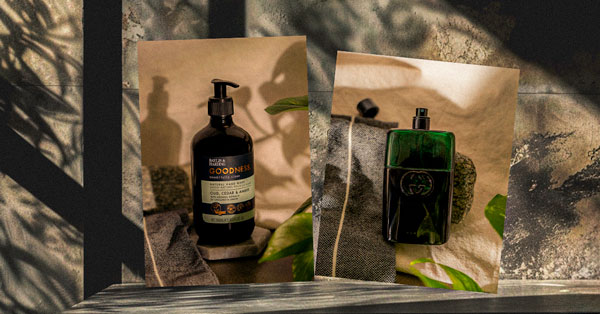Whisky is a deliciously broad category of spirits. With all of the different types of whiskey it can be daunting to say the least. Which makes getting your start learning what you like and don't tough on its own, let alone if you're trying to order a respectable glass for your boss or pick out an impressive bottle to give as a gift.
While the different whiskey types fall under the same broad category, they can taste dramatically different the way a ribeye steak and a drive-thru hamburger are both beef.
Our guide will help make sense of all the whiskey terms and ideas you've overheard and how they fit together.
Quick Whiskey Primer:
- Whisky is a distilled liquor made from a fermented grain like barley, corn, or rye that is aged in oak barrels. The barrels are charred on the inside and are the reason whiskies have a notable woodiness, among other flavors.
- Whiskies have an alcohol content of 40% to 60%, on the low end of that range for most common whiskies. Alcohol content is measured in “proof”.
- The primary difference in the flavors of whiskey types is which grain is dominant.
- Rye vs bourbon vs scotch: The dominant grain in rye is rye, corn for bourbon, and barley in scotch. Rye tends to have a spicier taste, corn produces a sweeter whiskey, and when barley is dried by burning peat in some scotches, the whisky takes on a smoky flavor.
- Depending on which country the whisk(e)y is produced in generally determines if the spirit is spelled whiskey or whisky.
- The main types of whiskey:
- Scotch Whisky: Made in Scotland from malted barley, aged in oak barrels for at least three years, known for its peaty flavor profile.
- Irish Whiskey: Triple distilled from a mix of malted and unmalted barley, known for its smooth and light flavor profile.
- American Whiskey:
- Bourbon: Made from at least 51% corn, aged in new charred oak barrels, known for its sweet and full-bodied flavor.
- Tennessee Whiskey: Similar to bourbon but must be made in Tennessee and filtered through charcoal before aging, giving it a smoother taste.
- Rye Whiskey: Made from at least 51% rye, known for its spicy and fruity flavor profile.
- Canadian Whisky: Often called “rye whisky” in Canada, typically smoother and lighter, made from a blend of grains.
- Japanese Whisky: Influenced by Scotch whisky but made in Japan, often features a meticulous blending process, known for its precision and variety of flavor profiles.
How Whisky is Made
When reduced to its components, all whisky types are made in a similar way:
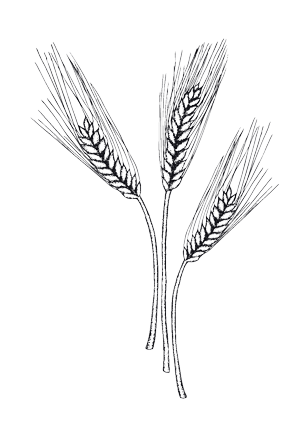
1. Malting
Grain is soaked, laid flat to sprout, then dried, and heated.
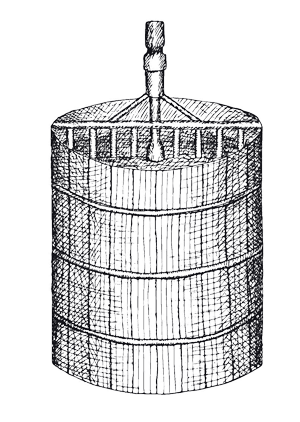
2. Mashing
“Mash” is created by mixing grain with water in a mash tun.
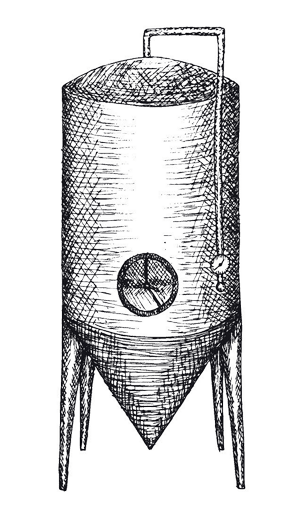
3. Fermentation
The mash is added to the fermentation tank with yeast. The yeast turns the sugars into alcohol.
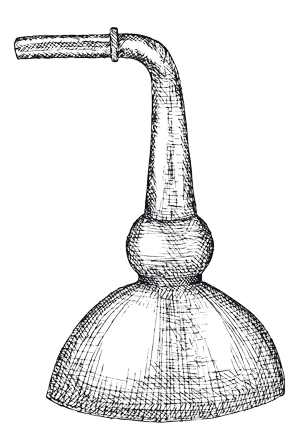
4. Distillation
The result is heated in a still until the alcohol separates from the water as a gas.
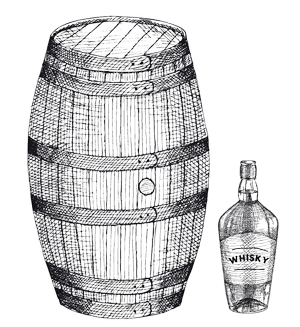
5. Aging & Bottling
Water is reintroduced to the alcohol and aged in wood barrels. The alcohol dissolves flavor molecules out of the wood. To provide even more flavor, the inside of the barrel is charred with fire. Some whiskey styles have minimum aging requirements. Finally, it’s ready for bottling.
What is whiskey made of?
The most important thing to understand when learning about whisky is the primary flavor difference between the types is determined by which grain is dominant. For example, scotch is made primarily with barley and bourbon with corn. Other differences, like the shape of the still (scotch is made in pots and bourbon is made in columns) also plays a role.
For a fun, nerdy, but understandable deep dive into how whisky is made, check out this PBS walkthrough.
Whiskey vs. Whisky
Whiskey or whisky? How the heck do you spell whisk(e)y?
- Irish whiskey is spelled with an e
- Whiskey made in the United States is spelled with an e
- Scotch whisky is spelled without an e
- Canadian whisky is spelled without an e
- Indian whisky is spelled without an e
- Japanese whisky is spelled without an e
Why are there two spellings of whisky? In a word: marketing. Prior to the 19th century, most of the world spelled it without an e, even the Irish, who were producing 70% of the worlds whisky at the time. The Scots began making inroads into the market, and the big four Irish distilleries published a book decrying the Scottish spirit, “cannot be whisky, and it ought not to be sold under that name.” A royal commission later determined both could be called whisky, and as a result many of the bigger Irish distilleries began labeling their product “whiskey” as a way to differentiate it.
Fast forward to post-Prohibition America, Irish whiskey and scotch whisky were the most popular styles in the US, but Irish sold at a 25% premium and was considered to be of a higher quality, so American producers adopted an e in an attempt to associate their spirit with it.
Types of Whiskey
North America
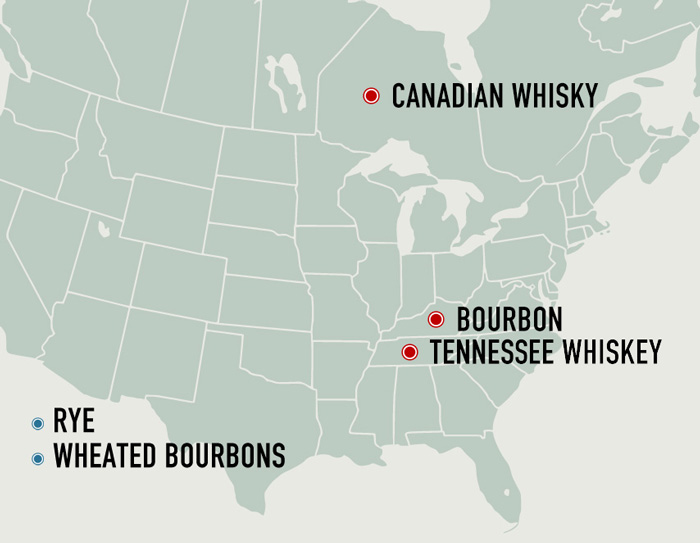
Whiskey has a long history in the American colonies and was one of the first industries to emerge. It is sewn into the fabric of the nation, being distilled by founding fathers, and the tax of it caused the Whiskey Rebellion. As Dickinson Law Librarian Mark Podvia noted in his paper Bourbon and the Law, “Isolated farmers, particularly those on the frontier, found it far easier to convert their excess grain to whiskey for shipment to market by wagon or raft.”
Bourbon
Primary grain: Corn
Flavor profile: Woody & sweet
Despite marketing fables that declare otherwise, the invention and early history of bourbon is not well understood. Whisky-making was likely brought to the Kentucky region by settlers with Scotch and Irish lineages.
In 1964, the United States congress passed a concurrent resolution defining bourbon as a product specifically of the US. By law, it must be made in the US (though 95% of it is made in Kentucky), but the production laws controlling the spirit date back to the Pure Food and Drug Act which was passed in 1906.
It, and subsequent clarifications, legally require bourbon to also be:
- 51% from corn (most are 70-80%) and the remaining ingredients can be rye, wheat, and malted barley. [The corn in bourbon makes it sweeter than rye whiskey.]
- Distilled at no higher than 160 proof
- Aged in new charred oak barrels at no more than 125 proof
- With a minimum of 80 proof at bottling
Recommended bourbons:
Bourbon cocktail recipes: Old Fashioned, Boulevardier, Mint Julep
What is proof?
Proof is the unit of measurement for alcohol content in a spirit. It is calculated by multiplying the percent of alcohol by volume (ABV) by 2. A whiskey that is 45% alcohol will be labeled as 90 proof. A whiskey with a higher proof is often referred to as “barrel proof” or “cask proof”.
Wheated Bourbons
Flavor profile: Mellow & nutty
In a wheated bourbon, rye is replaced by wheat as one of the grains after the dominant corn. The result is a sweeter whiskey. Maker's Mark is the most ubiquitous of this variety, and Pappy Van Winkle is probably the most famous.
Wheated bourbons to try:
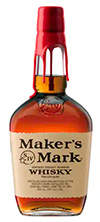
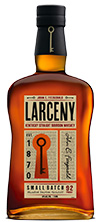
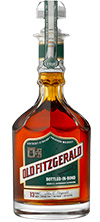
Tennessee Whiskey
Primary grain: Corn
Flavor profile: Sweet & smoky
Tennessee whiskey is made just like bourbon, but with one extra key step known as the “Lincoln County Process”. Before being put in charred oak barrels for aging, it is poured over sugar maple charcoal. The result is mellower, gently sweeter, and smoky. Due to a state instituted prohibition that outlasted the national prohibition, only a small number of distilleries have survived.
Common Tennessee whiskies
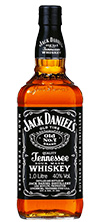
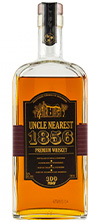
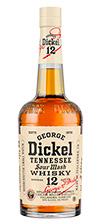
What is straight whiskey?
To be labeled a straight whiskey, the whiskey must meet the other American legal requirements while also aged for a minimum of two years. If aged less than four years, an exact age statement must appear on the label. This should not be confused with ordering or drinking a whiskey “straight” which is the same as neat: No ice, no water.
Rye
Primary grain: Rye
Flavor profile: Spicy & smoky
American rye can be made anywhere in the US. It is made of a 51% rye mash mixture, versus corn for bourbon, and is noticeably spicier. George Washington produced rye at Mount Vernon, and it was the most common whiskey of the northeastern states, but died out after prohibition. It's seen a revival in recent years. When used in a cocktail instead of bourbon, the result is drier, which can be an advantage if the recipe includes sweeter ingredients.
Best rye whiskies to start

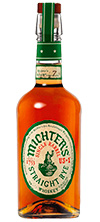
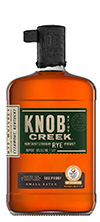
Rye whiskey cocktail recipes: Manhattan, Sazerac, Old Pal, Vieux Carré, The Toronto, Hotel D’Alsace,
Canadian Whisky
Primary grain: Mixed grain, primarily corn
Flavor profile: Light
A lighter, sweeter style, Canadian whisky (no ‘e') is easy to drink even in the warmer months. Because of this, Canadian whisky blends well with mixers. One aspect to the whisky of the north: Consistency. A decades old bottle should taste the same as a new one.
As far as liquors go, Canadian whisky is pretty unrestricted. Canadian law allows Canadian whisky to be called Canadian Whisky, Canadian Rye Whisky, or Rye Whisky, even though there is a greater percentage of corn in the mixture and only a small bit of rye and allows for the inclusion of “caramel and flavouring”.
Read more about The Fascinating History of Whiskey in North America.
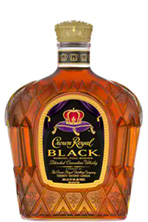
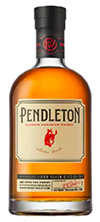
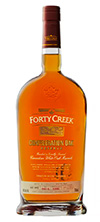
Scotch Whisky
Primary grain: Barley
Flavor profile: Complex

Scotch may be the largest category of whisky in terms of variations based on process, ingredients, and region. Scotland has more distilleries than any other country. While a common assumption is that scotch is ‘smoky', only a handful are. This is a remnant of the malting process, where smoke from burning peat is used to dry the barley, today it's an optional flavor enhancer.
Similar to bourbon in America, scotch is defined by the law. It must be matured in Scotland for at least 3 years in oak barrels. Additionally, “Single malts” are produced at a single distillery, in a pot still by batch distillation, using only water and malted barley. This causes them to be more expensive and individualistic.
“Blended scotches” are more mellow, easier to drink, but more difficult to make. Blend masters receive whisky from all over Scotland and must create a mixture that tastes consistent with what was produced the year before, even though the ingredients have changed. The blending smoothes out the rough edges and fills in gaps that are present in a single malt. Both varieties can be delicious for different reasons.
Common blended scotches
Speyside
Flavor profile: Sweet

Known for a smooth, fruity finish due to the fresh water used for distillation. Considered by some to be the most elegant of the country's whiskies, the Speyside has more distilleries than any of the other regions.
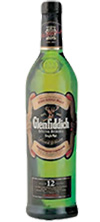
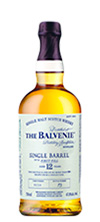
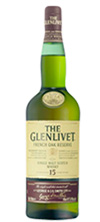
Islay
Flavor profile: Smoky

Known for smokiness, Islay whiskies have a pungent medicinal tang stemming from sea salt infused peat moss employed to dry the barley malt.
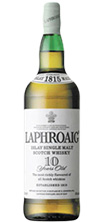
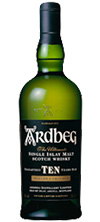
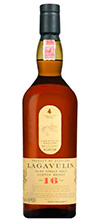
Highland
Flavor profile: Medium-bodied

Highland scotches vary in character, and can include the peaty smoke of an Islay or the smoothness of a Speyside. Generally they're considered to be medium-bodied and aromatic, with a range of tasting notes from complex to delicate.
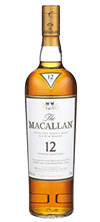
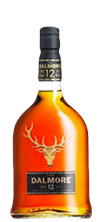
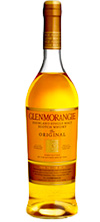
Lowland
Flavor profile: Relative sweetness & simplicity

Lowland scotches are known for their light profile and little to no peatiness. Because of this, they are often utilized in blends since their characteristics are not overpowering. While the area has fewer distilleries than northern regions, it has historic roots to whisky making, with Friar John Cor distilling whisky for King James IV in 1494.

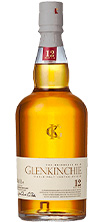
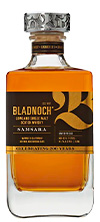
→ Read more about scotch: Getting Started With Scotch Whisky: Everything You Need to Know
Scotch cocktail recipes: Smoked Manhattan, Blood And Sand, Rob Roy, Bobby Burns, Penicillin,
Irish Whiskey
Primary grain: Barley
Flavor profile: Dry & fruity

It is believed that Christian missionary monks began distilling an aqueous ethanol solution for medical compounds and religious rituals when arriving in Ireland in the 7th century. Likely fruit-based in the beginning, by the mid-1500's the use of barley was common and whiskey was born. From there, the spirit made its way to Scotland and around the world.
What's the difference between Irish whiskey and scotch? While the malt used in producing scotch is dried with burning peat, the malt in Irish whiskey is dried in kilns, resulting in a smooth, light spirit that's easy on the palate. Once the most common whiskey in the world, Prohibition reduced Ireland’s distilleries to just two. However, with increased investment and market performance, as of December 2019 Ireland has 32 whiskey distilleries.
→ Dive deeper: An Introduction to Irish Whiskey
Irish whiskey cocktail recipes: Hotel D’Alsace, Irish Coffee, Irish Maid
“Smooth” may not always be your preference
One of the most eye-opening moments as I was learning to appreciate whiskey was when I took a sip of one that was extremely smooth – low alcoholic burn in the mouth – and I…was disappointed. It was in that moment that I realized the alcoholic burn is a component of a whiskey's flavor. Like salt, too much is uncomfortable and too little is bland. How much is the “right” amount is a personal preference.
Japanese Whisky
Primary grain: Barley
Flavor profile: Broad like scotch

Just like champagne can only come from France and the style made elsewhere is labeled sparkling wine, all scotch must be made in Scotland. What do you call that type of whisky when you make it in Japan? Why, Japanese whisky of course.
Japanese whisky is the relative newcomer in the world of whisky types, with Yamazaki, its first distillery founded by Shinjiro Torii, opening in 1924. Like scotch, the primary grain is malted barley and is distilled with pot stills. In fact, another one of Japanese whisky’s founding fathers, Masataka Takesuru worked in several Scottish distilleries, learning the craft before returning to Japan and working at Yamazaki to produce Suntory Whisky.
Subsequently Takesuru struck out on his own and started what would later be known as Nikka Whisky, the second most successful distillery in Japan. Suntory grew to become the third largest distiller in the world when it purchased Beam Inc, makers of Jim Beam, Knob Creek, Old Overholt, Laphroaig, and many others, in 2014.
And, just as California wines were often seen as second-rate compared to traditional European offerings until they started coming in first place at competitions, Japanese whisky was long ignored. That is, until 2001 when a Japanese whisky won Whisky Magazine’s top international prize “Best of the Best,” with Suntory whiskies winning gold medals in international whisky competitions every year since.
The sudden increase in reputation has come at a cost. Shortages have plagued the Japanese whisky supply for years, causing some producers to begin mixing their product with imported scotch and other eyebrow raising practices. This resulted in the leading trade association that covers Japanese whisky to announce sweeping new industry-wide regulations detailing what can be labeled as “Japanese whisky” in February 2021. Unlike the legal requirements of scotch and bourbon in their respective countries, Japanese whisky has had little regulation up to this point.
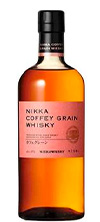
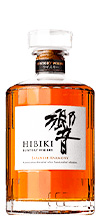
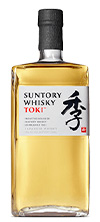
Nothing pairs with whiskey like some great music. That's why we created A Playlist – Music to Sip Whiskey to: A Gentleman’s Introduction to the Blues.




